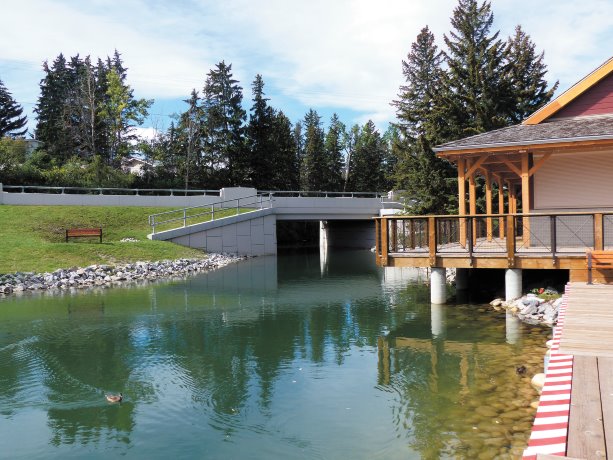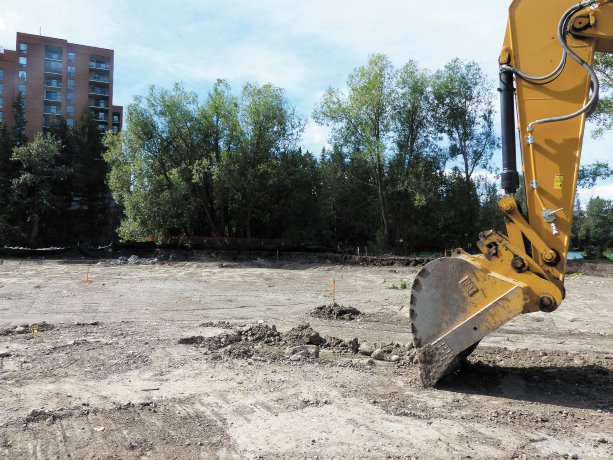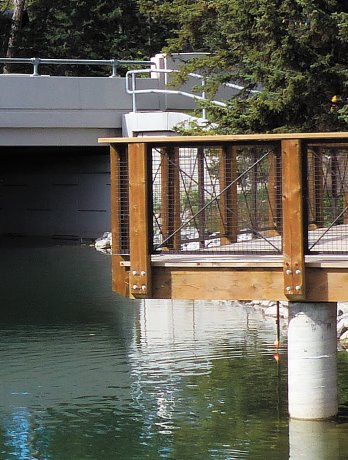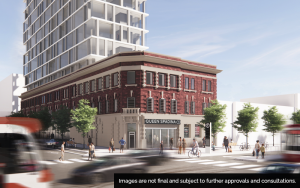Bowness Park is one of Calgary’s most historic parks. It was built prior to First World War in the then-settlement of Bowness, now part of Calgary. Bowness Park is undergoing a complete makeover that’s still in progress because of setbacks caused by major flooding in 2013.
"It hasn’t had anything significant done in the past 50 years. With the city growing, and the increased demand in park usage, it was long overdue," said Doug Marter, the City of Calgary’s Parks Planning and Development manager, adding that much of the redevelopment is about critical life cycle issues with utilities and infrastructure.
The $14.2 million Bowness Park Redevelopment Project began in 2012 and is set to wrap in the spring of 2016.
While the park partially re-opened to the public in November 2014, a new wading pool and spray park, along with additional washrooms and change rooms, are still under construction in the park’s east end.
One of the core improvements in the newly-renovated Bowness Park deals with its iconic lagoon, whose banks were caving in because of fluctuating water levels.
As part of the redevelopment, new weirs were installed to control water levels, replacing the 1930s-era versions that were still in use.
"They allow us to control water levels with more precision and are easier to use," explained Marter.
However, with the now-higher water levels – particularly when the lagoon is used for skating in the winter – the entrance bridge into the park, which overarches the lagoon, didn’t have sufficient clearance.
As such, a new bridge into the park was built. Another major project involved replacing the old concession building with a new teahouse evocative of the park’s history and a major deck area was installed near it to allow better access to the lagoon.
More parking has been added and picnic shelters have been refurbished, along with improved drainage systems near picnic areas.
Marter said the massive flooding that hit Calgary in June 2013 was a major setback for the redevelopment project.
"We were 40 – 50 per cent complete with the redevelopment when the flood hit," he said.
"Within 24 hours, the park was inundated with water levels up to eight-feet deep and a massive amount of debris and silt flowed in. We probably lost a year in time."
Marter added that he’s thankful that the Bow River’s banks had been restored about three months prior to the flood, a process that involved re-vegetating the riparian edge and putting in natural stone steps for better river access.
"That’s the best flood prevention anyway. The riparian edge reduces the velocity of flow and makes for more sustainable banks," he said. Marter said the original project plans included contingencies for flood mitigation.
"We tried to build as much resiliency into the park as we could," he said, adding that the 2013 flood caused the design team to re-evaluate our flood minimization effects, resulting in some additional resiliency.
For example, in the case of the new teahouse, the foundation wall exceeds the maximum flood elevation and doors can be sealed to minimize encroachment of water.
Marter said the City of Calgary has a LEED Gold standard for new buildings.
For example, newly-upgraded washrooms in Bowness Park employ water conservation systems and sustainable lighting has been implemented throughout the park.
"We’re hoping to see a 15-20 per cent reduction in energy use compared to where we were last year with conventional lighting," he said. "We now have state-of-the-art lighting and utilities."
Graham Construction is the prime contractor for the washroom and wading pool upgrades. Electrical systems have also been updated throughout the park, allowing for much more capacity.
Furthermore, he said, water is being pumped from the lagoon for the park’s irrigation systems and that water in the spray park will be treated and re-circulated. A particular feature of Bowness Park well-beloved by the public is the mini train dating from the 1940s, in which one can ride around the park.
During public consultation sessions, Marter said people were adamant the train be retained, although it was hit hard by the flooding.
The city managed to find retired millwrights and mechanics to restore the train and a rail company came in to replace the tracks.
"This is a really good opportunity to refresh one of our oldest parks and bring it up to current standards," Marter said.

1/2
The redevelopment of Bowness Park in Calgary suffered a serious setback in the 2013 flood. Construction is still taking place.
Photo: Kathleen Renne











Recent Comments
comments for this post are closed